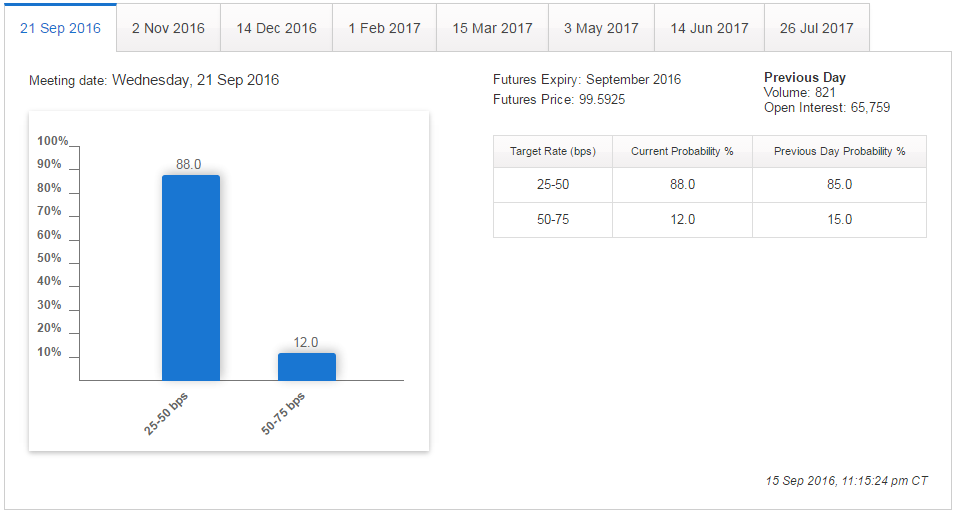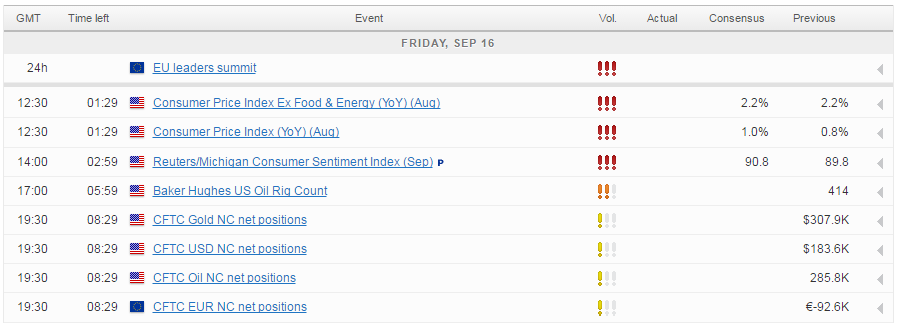Data from the US on Thursday dealt yet another blow to hopes of a September hike from the Federal Reserve, with retail sales data disappointing for a second month and casting more doubt on whether the US economy is as healthy as policy makers would have us believe.
Dollar Needs Fed and BoJ Guidance
With two more important pieces of economic data to come again on Friday, the question has become whether the Fed will raise rates this year rather than next week. A September hike has been all but written off by the markets, with the implied probability now down to only 12%, a level that the Fed will be very reluctant to act at on the fear of creating unnecessarily market turbulence.
Source – CME Group FedWatch Tool
If the Fed was intending to raise rates at this meeting, it would have to seriously reflect on its communication strategy because the message from policy makers has been very mixed, with some key members appearing to be very much opposed to doing so. Today’s data has probably come too late to impact the decision next week but the December meeting remains very much live and inflation and consumer metrics are likely to feature heavily in Fed discussions.
While the CPI release is not the Fed’s preferred measure of inflation, it is released ahead of the core PCE number and therefore offers more timely insight into inflationary pressures in the US. The dollar has been gradually rising since May which may weigh on the data slightly, although it still remains some way off the levels from the start of the year. Still, the core CPI is expected to remain at 2.2% compared to a year ago which is above the Fed’s target of 2% and while this is higher than the 1.6% core PCE reading from last month, it does suggest that inflationary pressures are existent in the economy. What we’re looking for though is signs that inflation is picking up or slowing down, which could also be reflected in the PCE figure in a couple of weeks.
USD/CAD – Canadian Dollar Dips, Canadian Manufacturing Sales Next
Consumer sentiment is expected to rise to 90.8 in September, falling just short of the highest levels it’s been at since the 2008 financial crisis and where it has been consistently at since the start of last year. The only problem is that this is not really being reflected in actual consumer spending behaviour, as evidenced once again in the retail sales number yesterday which begs the question, how much attention can we actually pay to it. Should we see it rise in line with expectations, or slightly higher, then the answer is probably not too much. A surprise decline though will be taken as a further sign that consumer spending is going to remain subdued throughout the second half of the year and strong growth will continue to elude the world’s largest economy.
For a look at all of today’s economic events, check out our economic calendar.


